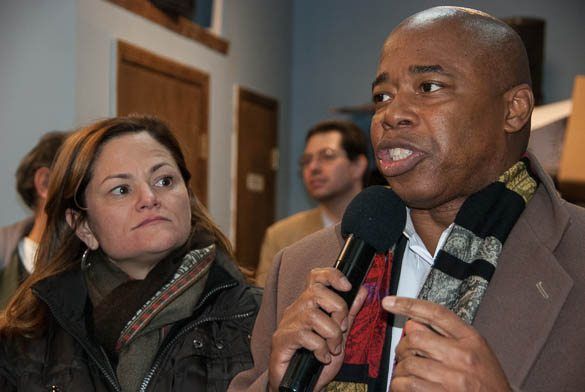New Borough President Seeks Air Rights Swap For Land Bank, Continued Growth Of Coney Island

Newly sworn-in Brooklyn Borough President Eric Adams probably had the easiest job of any new candidate in the 2013 election season. He had successfully lined up support long before the primaries and faced only token opposition in the race.
While it was one less campaign for voters to follow, it also meant Brooklyn residents had little opportunity to learn about the next big borough booster, and how he’ll fill Marty Markowitz’s out-sized shoes.
The Borough President doesn’t hold much power when it comes to legislation or services, but does have an influential role in the land use review process that oversees major developments. Although the beep’s say is only advisory, his word can help usher through lucrative and transformative development plans quickly – or stop them in their tracks.
At a borough president roundtable hosted by Crain’s New York Business, all five beeps came together to discuss their policy plans. Among other things, Adams is pushing a plan to sell air rights in the borough and establish land banks for affordable housing. Crain’s reports:
Brooklyn Borough President Eric Adams broached an idea to sell air rights in the borough—presumably, in downtown Brooklyn—with the money then used for “land banks” that would fund affordable housing. “Brooklyn must remain affordable,” said Mr. Adams, who is hoping to revitalize poorer neighborhoods such as East New York and Brownsville. He also said he planned to look at developing armories in the borough, and to continue to develop Coney Island, which was hit hard by Superstorm Sandy, “to draw people through the borough.” Development boomed in Brooklyn under his predecessor, Marty Markowitz, but some African-American communities in the central and eastern parts of the borough missed out on the renaissance.
Selling air rights means that if a building owner has not built to the vertical limit allowed by zoning laws, the owner can sell the remaining development potential to an adjacent property owner. If a developer can build up to six stories, for example, but only builds three, he can sell the remaining three stories to his neighbor, who can then build nine stories.
Meanwhile, to form a land bank means the creation of a quasi-governmental agency that will obtain blighted properties or tracts of land to be repurposed for other uses – in this case, the creation of affordable housing.
Both proposals have the potential to transform the Brooklyn real estate landscape, and both will need strict oversight to combat corruption.
What do you think of the new beep’s plans?



